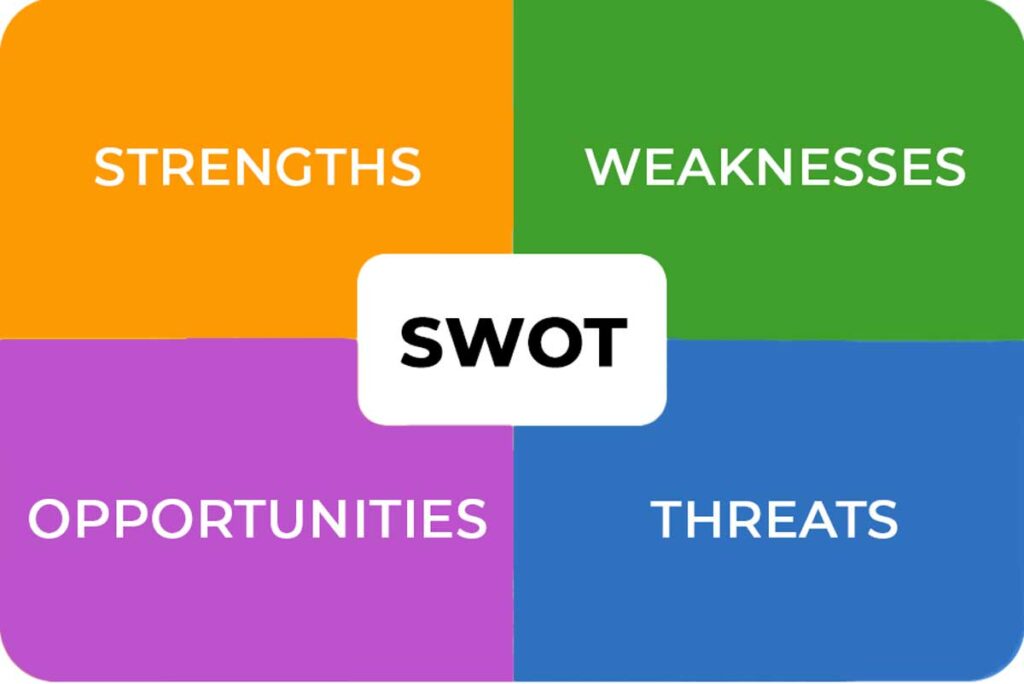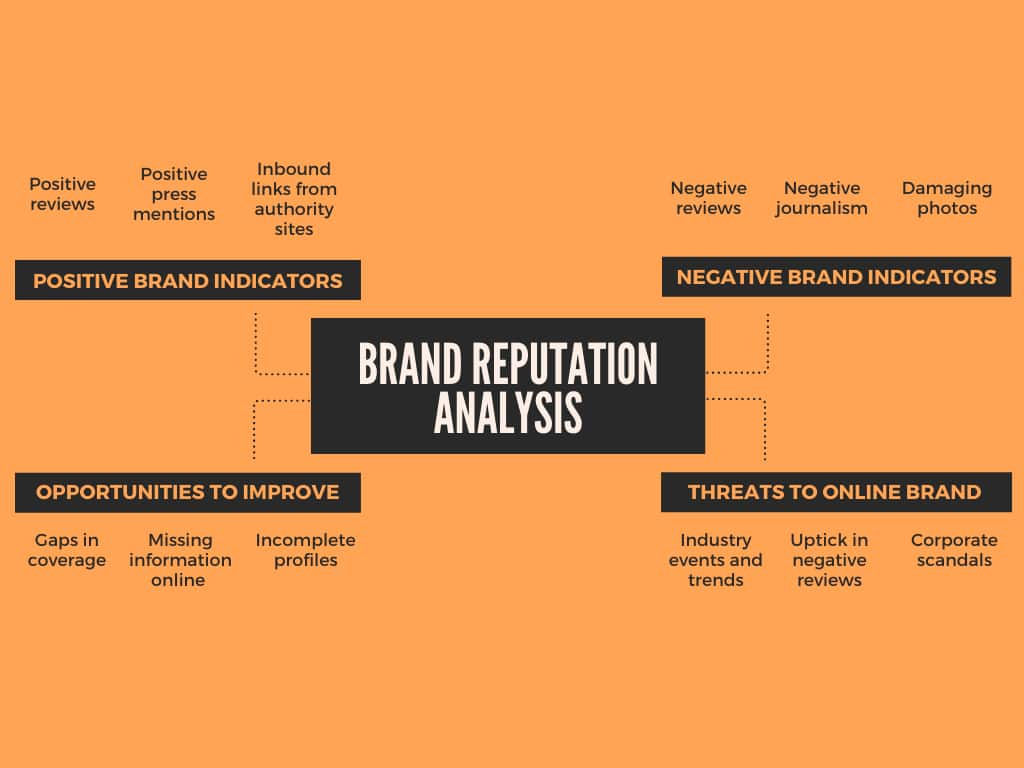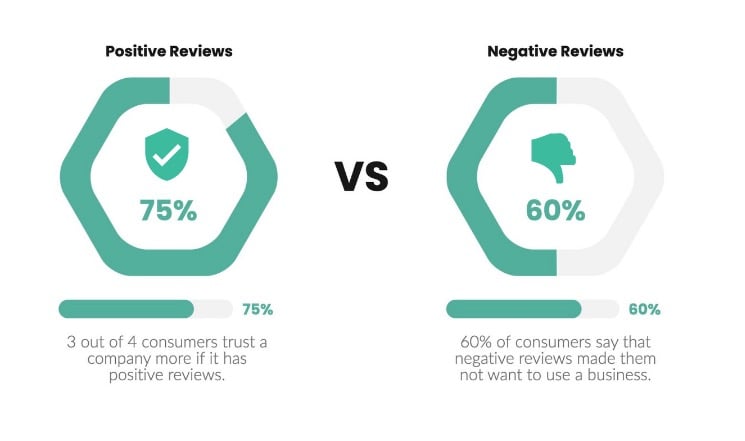How to Perform a Thorough Brand Analysis: SWOT Analysis for Brands Online
A brand reputation analysis explores the sentiment reflected by the online content associated with your brand. By considering various factors, it provides a comprehensive overview of your brand’s online reputation. This article offers detailed insight into conducting a reputation analysis for your brand.

This process involves evaluating various aspects of a brand to gain insights into its performance, perception, and strategic positioning. By conducting a thorough brand perception analysis, companies can see how customers view and feel about their brand, which is crucial for maintaining a positive image and fostering customer loyalty. Additionally, maintaining a good brand image is important as consumers mention brands an average of 90 times per week.
Table of Contents:
- Key Factors of Brand Reputation Analysis
- The SWOT Framework for Reputation Analysis
- Practical Steps for Brand Analysis
- Leveraging Brand Analysis for Strategic Decision-Making
- Case Study: Apple
- FAQs
Key Factors of Brand Reputation Analysis
The analysis scrutinizes four main aspects:
- Positive Brand Indicators: These identify the strengths of a brand, such as consistently good content, which positively impacts its online portrayal.
- Negative Brand Indicators: The analysis reveals potential weaknesses, such as poor content, that might impede the maintenance of a positive reputation.
- Online Reviews: The sentiment of your brand can be gauged via online reviews, which serve as a critical indicator.
- Online Mentions: Sentiments regarding your brand reflected through mentions on social media, review sites, or other authority sites are evaluated.

Moreover, the analysis takes into account the relative visibility of search and social results that might influence the sentiment of people performing searches for your brand.
The SWOT Framework for Reputation Analysis
The SWOT (Strengths, Weaknesses, Opportunities, Threats) Analysis serves as a valuable tool in assessing the online reputation landscape.
Strengths
Strengths in an online sentiment context relate to aspects where your brand excels digitally and separates it from the competition. These might include a high number of positive online reviews, a robust social media presence, engaging and high-quality web content, and strong SEO rankings. Recognizing these strengths allows a brand to leverage them to its advantage, enhancing its online reputation and visibility.
Weaknesses
Weaknesses are factors that prevent your brand from maintaining a positive online reputation. These could range from negative reviews and low engagement rates on social media to a poorly optimized website or negative press coverage. Identifying these weaknesses provides an opportunity to address and rectify issues that could harm your online reputation.
In fact, 60% of consumers said that negative reviews made them not want to visit a business.

Opportunities
Opportunities in the online sentiment landscape involve external factors that your brand can capitalize on to improve its online reputation. These might include emerging social media platforms, influencer partnerships, gaps in competitors’ digital strategies, or new SEO practices. By identifying these opportunities, a brand can adapt its strategy to seize them, ultimately enhancing its online sentiment.
Threats
Threats encompass external factors that could harm your online reputation. This could involve negative viral content, increased competition, changes in search engine algorithms that impact your visibility, or adverse public relations incidents. Identifying potential threats allows for proactive planning and response strategies, mitigating any damage to your online sentiment.
The Role of SWOT Analysis in Strategic Planning
Conducting a SWOT analysis for online sentiment gives a brand a clear picture of its current online reputation landscape. This understanding is crucial in developing an effective reputation management strategy.
By knowing your strengths, you can highlight and build upon what you do best. Recognizing weaknesses allows you to address potential problems before they escalate. Identifying opportunities helps ensure you are staying ahead of industry trends and effectively competing in the digital space. Finally, understanding potential threats allows you to create contingency plans and respond proactively to potential crises.
A SWOT analysis is a powerful tool that, when used correctly, can help your brand navigate the digital landscape effectively. With thorough insight into your brand’s online sentiment, you can make informed strategic decisions, maintain a positive and valuable brand reputation, and foster long-term success in the digital arena.
Practical Steps for Brand Analysis
Setting Clear Objectives and Goals
To begin a thorough brand analysis, establish clear objectives that guide the entire project. Objectives might include identifying strengths, weaknesses, opportunities, and threats (SWOT analysis), understanding target audiences, and evaluating competitive positions. This initial step ensures that all subsequent actions are aligned with the brand’s strategic goals.
“Branding demands commitment; commitment to continual re-invention; striking chords with people to stir their emotions; and commitment to imagination. It is easy to be cynical about such things, much harder to be successful.”
Sir Richard Branson
Utilizing the Right Tools and Methods
Employ various tools and methods to collect both quantitative and qualitative data. Quantitative data might come from metrics like website traffic and social media engagement, while qualitative insights can be gained through customer feedback and sentiment analysis. Tools like brand analytics software help in monitoring these metrics effectively, providing a comprehensive view of the brand’s performance.
Analyzing and Interpreting Data
Once data is collected, analyze it to identify patterns, trends, and insights. This involves comparing brand performance against industry benchmarks and competitors. Analyzing data helps in understanding how well the brand aligns with the intended market perceptions and the effectiveness of current marketing strategies.
Actionable Insights and Strategic Planning
The final step involves translating the data insights into actionable strategies. This could include adjustments in marketing approaches, enhancing customer engagement tactics, or redefining the brand’s value proposition. Strategic planning based on these insights helps in making informed decisions that drive brand growth and improve competitive positioning.
Leveraging Brand Analysis for Strategic Decision-Making
Enhancing Brand Strategy and Messaging
Leveraging brand insights allows businesses to refine their strategic messaging and align it with customer expectations. By understanding specific customer pain points and preferences, companies can tailor their marketing campaigns and product offerings more effectively. This strategic alignment helps in enhancing brand identity and ensuring consistent messaging across all platforms.
Improving Customer Experience and Loyalty
Analytics play a crucial role in shaping customer experiences by identifying interaction patterns and predicting future behaviors. Insights from customer experience analytics enable businesses to streamline processes, enhance satisfaction, and boost loyalty. Personalization, driven by accurate analytics, fosters a deeper connection with customers, significantly enhancing their overall experience and loyalty to the brand.
Identifying and Seizing Market Opportunities
Brand analysis provides valuable insights into market positioning and competitive advantages, enabling businesses to identify and capitalize on new market opportunities. By analyzing trends and customer feedback, companies can innovate and adapt their offerings to meet evolving consumer needs, thus seizing opportunities that may not have been apparent without a thorough brand analysis.
Proactive Reputation Management and Crisis Avoidance
Effective brand analysis includes monitoring brand sentiment and customer feedback, which are essential for proactive reputation management. By understanding public perception and identifying potential issues early, businesses can implement strategies to manage and mitigate crises before they escalate, ensuring the brand maintains a positive reputation in the market.
Case Study: Apple
One of the most impressive examples of successful brand analysis and revitalization is Apple Inc. In the late 1990s, Apple was struggling mightily, having lost its way after being a pioneering brand that defined the personal computer revolution.
The company’s products had become stale, its brand identity was muddled, and it was quickly losing relevance and market share. However, after Steve Jobs returned as CEO in 1997, he initiated a comprehensive brand analysis that would chart Apple’s path forward. Jobs and his team went back to Apple’s roots, realizing the brand’s core identity was about innovative design, simplicity, and putting the user experience first.
They doubled down on these principles across all aspects of the business – product design, marketing, retail, and more. Apple’s iconic “Think Different” ad campaign in 1997 kicked off the brand revitalization, celebrating innovators who pushed the world forward.
The iMac’s launch in 1998 with its translucent colored cases showed Apple was once again leading on design. This laser-focused brand strategy paid off tremendously, allowing Apple to introduce revolutionary products like the iPod, iPhone, iPad and become one of the most valuable and admired brands globally.
FAQs
- What are the steps to perform a comprehensive brand analysis? To perform a brand analysis, you should begin by establishing an analysis framework. Collect audience feedback and engage in social listening to understand public perception. Assess the effectiveness of your marketing strategies and analyze traffic on your website and social media. Examine the customer journey to see how consumers interact with your brand. Conclude your analysis by reviewing all collected data and consider outsourcing the analysis for an expert perspective.
- What elements are typically included in a brand analysis? A brand analysis typically includes critical elements such as revenue projections, market share, and lead generation quotas. These metrics help in formulating a strategic plan for growth and profitability, providing a solid basis for decision-making rather than speculative estimates.
- How do you conduct a brand monitoring analysis? To conduct a brand monitoring analysis, track key metrics such as monthly website visits, number of mentions, distribution of marketing channels, reach on social media and other platforms, engagement levels, presence score, top keywords, and sentiment analysis. These metrics are essential for understanding the impact and reach of your brand.
- What criteria should be considered during a brand analysis? When analyzing a brand, it’s crucial to examine how the brand is expressed and perceived across various touchpoints, including the logo, website, social media, packaging, advertising, and customer service. The analysis should evaluate the consistency, coherence, and compelling nature of your brand identity and message.
About the author
Kent Campbell is the chief strategist for Reputation X, an award-winning online reputation management agency. He has over 15 years of experience with SEO, Wikipedia editing, review management, and online reputation strategy. Kent has helped celebrities, leaders, executives, and marketing professionals improve the way they are seen online. Kent writes about reputation, SEO, Wikipedia, and PR-related topics.
–
Tags: Business Reputation Marketing, Corporate Reputation, Reputation Marketing.
